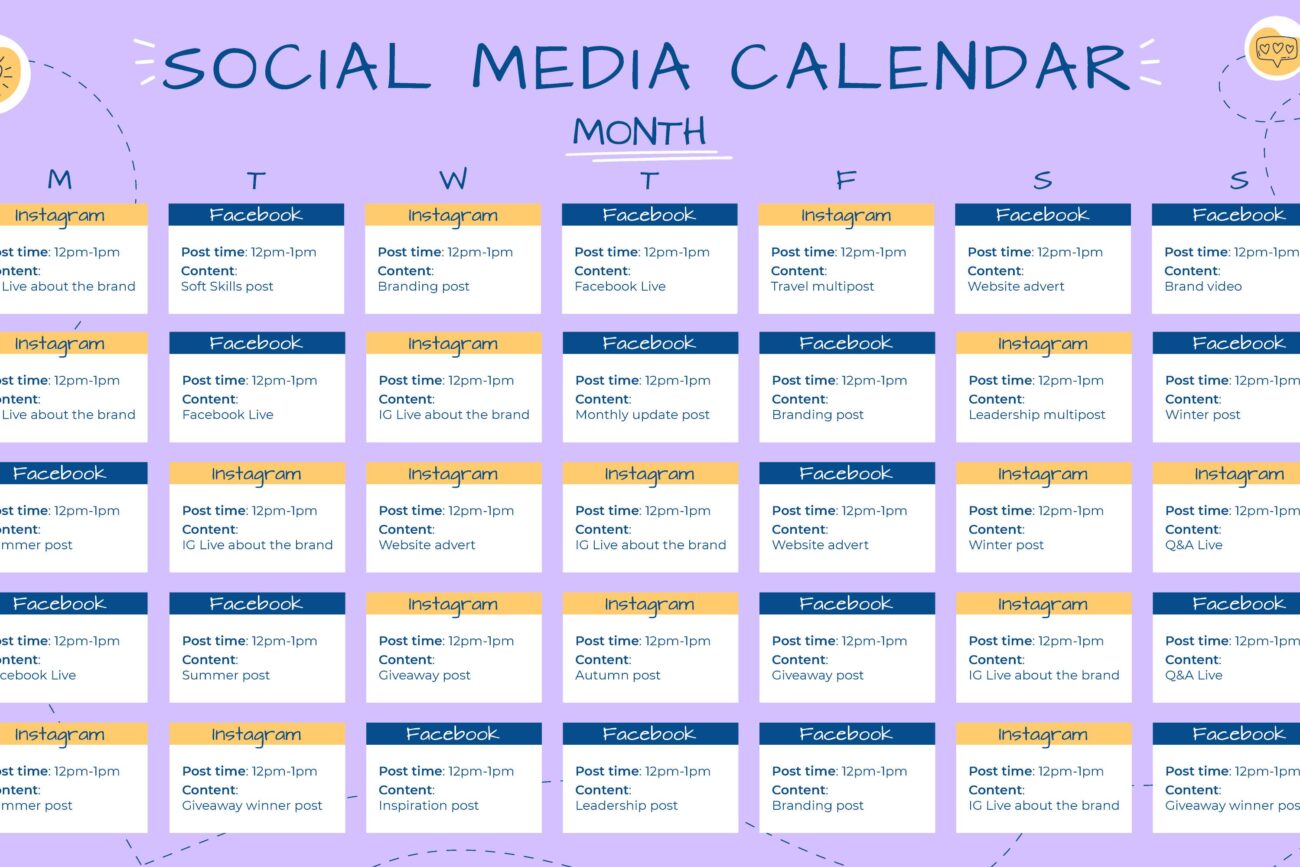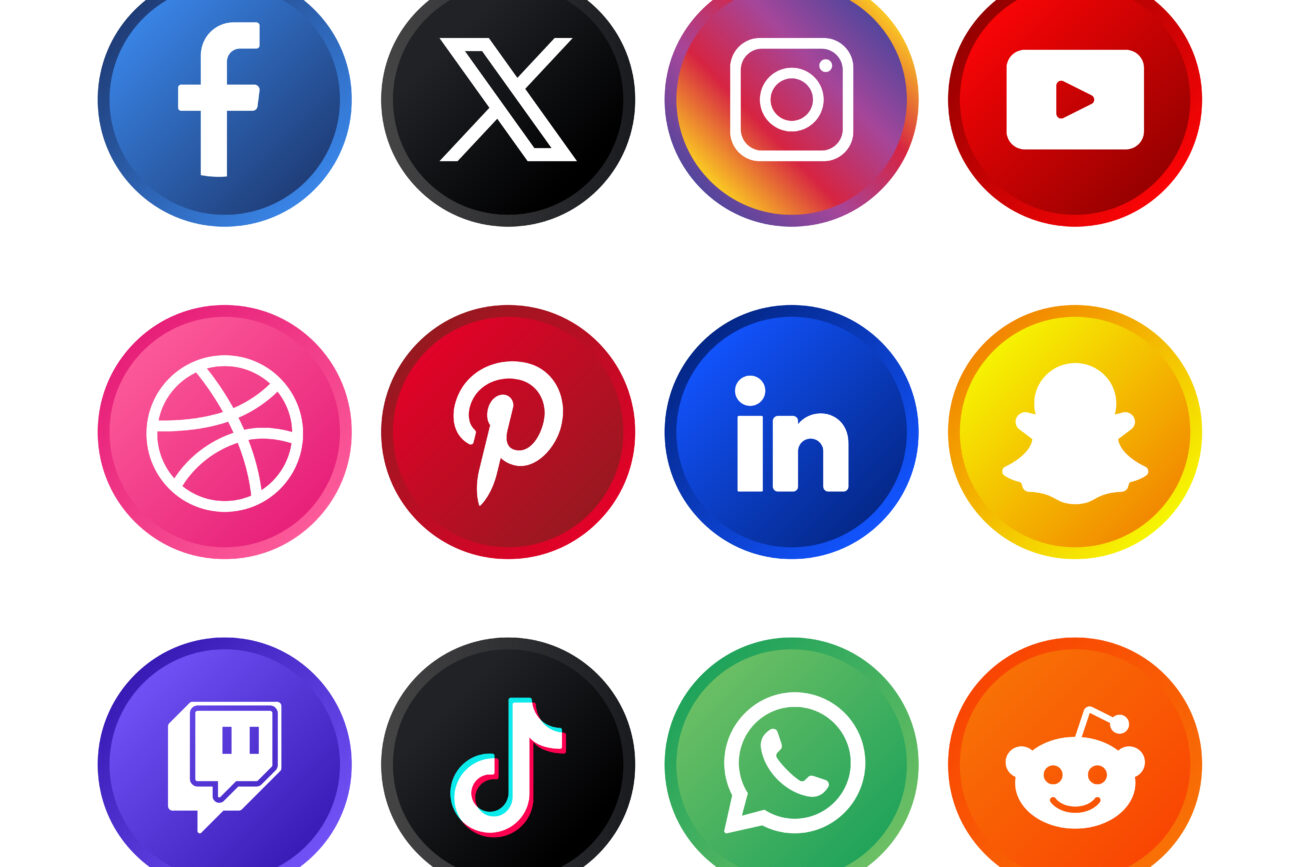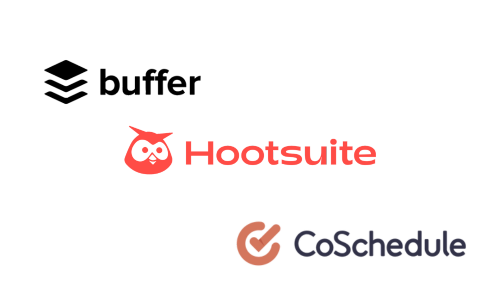Table of Contents

Why social media content planning is essential for your brand
If you fail to plan, you plan to fail. This mantra is especially true in the world of social media. Managing multiple channels is no small feat, but with a well-structured social media content calendar, you can streamline your efforts and maintain a consistent, high-quality presence online.
Think of your content calendar as a cheat sheet that allows you to plan posts in advance, balance evergreen and timely content, and coordinate with cross-functional teams. Whether you’re managing a single account or multiple platforms, a content calendar ensures that your messaging is cohesive and that every post aligns with your brand’s goals.
In this guide, we’ll walk you through the process of creating a powerful social media content plan that not only boosts your online presence but also supports your long-term business objectives. With a strategic approach, you can navigate the complex world of social media marketing with confidence and ease.

What is a social media content calendar?
At its core, a social media content calendar is a schedule that maps out all your social media posts across various platforms. It serves as a central hub where you can plan upcoming content, track what’s been posted, and coordinate efforts with your team. This tool is invaluable for maintaining consistency, especially if you’re juggling multiple social media accounts.
A content calendar is more than just a planning tool—it’s a strategic asset that helps you balance evergreen content with timely posts, manage different versions of posts for various platforms, and ensure your content aligns with your broader marketing goals. By having a clear view of your social media landscape, you can keep your messaging on point and your audience engaged.

Why you need a social media content calendar
You might be wondering: Do I really need a social media content calendar? The answer is a resounding yes. A well-structured calendar allows you to:
- Plan posts in advance: Get ahead of your schedule by visualizing what’s next in your content plan. This foresight helps you maintain a steady flow of content, avoiding last-minute scrambles.
- Brainstorm social posts: Collaborate with your team to brainstorm new social media ideas and integrate diverse voices into your content strategy.
- Balance evergreen and timely content: Strategically plan both evergreen and timely posts to engage your audience consistently.
- Track important dates: Keep track of significant company events, product launches, and other key dates to ensure your content is always relevant.
- Stay updated on hashtags: Maintain a list of relevant hashtags to boost your posts’ visibility and engagement.
- Coordinate influencer posts: Manage influencer collaborations by tracking their contributions and engagement metrics within your calendar.
- Centralize visual assets: Plan and organize visual content in advance to enhance the quality of your posts.
- Report on social media metrics: Track the performance of your posts to refine your strategy and achieve your social media goals.
In essence, a social media content calendar is a must-have for any team serious about building a strong, cohesive, and engaging online presence.
How to create a social media content calendar
Building an effective social media content calendar might seem daunting, but with the right approach, it can be straightforward and highly rewarding. Here’s a six-step guide to help you get started:
1. Identify your social media channels
Before diving into specific posts, take a step back to evaluate which social media platforms are most relevant to your audience. Are there platforms that you haven’t yet tapped into that your audience frequents? Or perhaps some channels are no longer serving your brand’s needs?
By pinpointing where your audience is most active, you can focus your efforts on the platforms that will yield the best results. This strategic focus ensures that your content is optimized for each platform, whether it’s a poll on Twitter, a live stream on Instagram, or a blog post shared on LinkedIn.

2. Conduct a social media audit
To create a baseline for your social media strategy, start by auditing your current social media profiles. Identify your most successful posts, the types of content that generate the most engagement, and when your audience is most active. This audit will give you valuable insights into what’s working and what needs improvement.
If your audit reveals gaps in your strategy or areas of uncertainty, don’t worry. Your social media content calendar will help you track and report on your progress, allowing you to refine your approach continuously.
3. Decide what to track
Now that you’ve identified your key platforms and conducted an audit, it’s time to create your content calendar. Decide what information you want to track, such as post dates, content types, platforms, hashtags, and engagement metrics. This level of detail will help you stay organized and make data-driven decisions.
Using metadata in your calendar can further enhance your tracking. For example, you might track which hashtags are most effective, which channels drive the most engagement, or which times of day are best for posting. This granular approach allows you to optimize your content strategy over time.

4. Plan your posting cadence
With your content calendar framework in place, it’s time to plan your posting cadence. How often will you post on each platform? How far in advance will you create and schedule your content?
Building out your posting schedule also involves organizing your asset library. Whether you rely on a design team or use stock images, having a library of assets ready to go will streamline your content creation process. This preparation ensures that your posts are not only timely but also visually engaging.

5. Build out a review schedule
Establishing a review schedule is crucial for maintaining the quality and consistency of your social media content. Decide who will review your posts and when this review should take place. If your posts require approval from other teams, such as legal or branding, your calendar can help you keep track of these reviews.
A centralized review process not only ensures that your content meets your brand’s standards but also reduces the risk of errors, such as typos or incorrect links before your posts go live.
6. Track and report on published content
Once your content is live, use your calendar to track and report on its performance. Analyzing engagement metrics such as likes, shares, and comments will provide insights into what resonates with your audience. This data is invaluable for refining your strategy and ensuring that your future posts are even more effective.
Your social media content calendar becomes a powerful tool for ongoing optimization, allowing you to continuously improve your social media campaigns and build a stronger connection with your audience.
Common mistakes to avoid in social media content planning
While a social media content calendar is a powerful tool, it’s important to avoid common pitfalls that can hinder its effectiveness. Here are some mistakes to watch out for:
- Overlooking platform specifics: Each social media platform has its own audience and content preferences. Avoid using a one-size-fits-all approach by tailoring your content to each platform’s unique characteristics.
- Ignoring analytics: Data is key to refining your strategy. Regularly review your analytics to understand what works and what doesn’t, and adjust your content accordingly.
- Being too rigid: While planning is important, flexibility is crucial in social media. Be prepared to adapt your content calendar to respond to trends, current events, or unexpected opportunities.
- Skipping interaction: Social media is about engagement. Don’t just post content—interact with your audience through comments, likes, and shares to build a stronger connection.
By avoiding these mistakes, you can maximize the impact of your social media content calendar and create a more dynamic and engaging online presence.
What should be included in a social media content calendar?
A social media content calendar should include the dates and times for your posts, the platforms where each post will be published, and a brief description or preview of the content. It can also include notes on special events, holidays, or product launches that you want to promote.
How often should I update my social media content plan?
It’s a good idea to review and update your social media content plan at least once a month. This allows you to adjust your strategy based on what’s working and what’s not, and to incorporate any new ideas or trends.
Can I use the same content across all social media platforms?
While you can repurpose content for different platforms, it’s important to tailor your posts to each platform’s unique audience and format. For example, a blog post might work well on LinkedIn, but you might want to create a shorter, more visual version for Instagram.
How do I measure the success of my social media content?
Success can be measured using a variety of metrics, including engagement (likes, shares, comments), reach (how many people saw your post), and conversion rates (how many people took action after seeing your post). Use analytics tools to track these metrics and adjust your strategy as needed.

What are the best tools for creating a social media content calendar?
There are many tools available, including Hootsuite, Buffer, and CoSchedule, that can help you create and manage your social media content calendar. These tools allow you to schedule posts, track performance, and collaborate with your team.

How do I keep my social media content fresh and engaging?
Mixing up your content types, staying on top of industry trends, and regularly engaging with your audience are key ways to keep your social media content fresh. Don’t be afraid to experiment with new ideas and formats to see what resonates with your audience.
Conclusion
Effective social media content planning is the foundation of a successful online presence. By following the steps outlined in this guide, you can create a strategy that not only engages your audience but also supports your long-term business goals. From setting clear objectives to measuring your results, every step of the process is crucial to building a brand that stands out in the digital landscape.
Remember, social media is more than just a platform for sharing content—it’s a powerful tool for building relationships, telling your brand’s story, and driving business growth. So start planning today, and watch your social media presence transform from ordinary to extraordinary.

